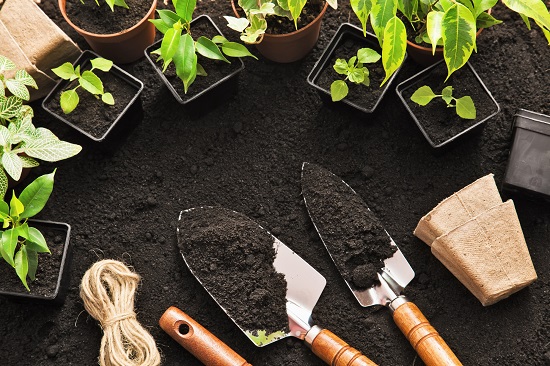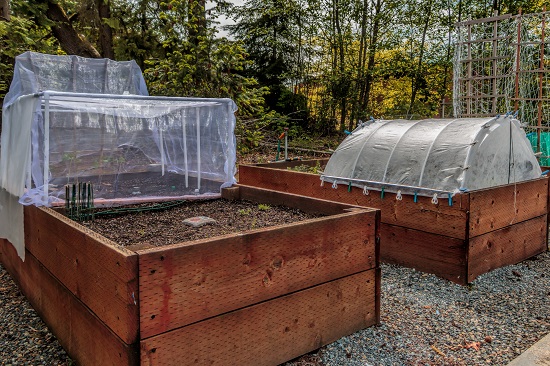Gardening can feel like an endless battle against Mother Nature. You find yourself grappling with torrential rains, scorching drought, and freezing frosts, each playing a role in the success of your green sanctuary. Are you tired of losing your precious plants to unpredictable weather? It might be time to adopt a gardening strategy designed to withstand the elements.
Understanding Weather And Climate Impacts On Gardens
Different weather conditions pose distinct challenges to gardens. High winds can topple trees and uproot plants, and flooding can drown roots and promote diseases. Similarly, drought and frost also present their own complications. So, grasping your local climate remains a key factor in creating a resilient garden.
Take, for example, the vast variety of low maintenance plants in Florida that can thrive despite the state’s hot, humid summers and the occasional hurricane. In contrast, a garden in Maine would require a different set of plants and techniques to survive its harsh, cold winters.
The next step in this journey is designing a weather-proof garden.
Practical Steps To Design A Weather-Resistant Garden
Creating a weather-resilient garden might seem daunting, but with a thoughtful approach, it’s certainly achievable. Below are some practical steps to guide you in crafting a resilient green space equipped to face Mother Nature’s many moods.
Research suitable plants: The first step is to identify plants that are well-suited to your local climate and soil conditions. This includes native plants naturally adapted to your region and other resilient species that can tolerate local weather extremes.
Assess your garden area: Map your garden, noting not only of sunlight exposure and areas where water tends to collect but also factors like wind exposure and existing vegetation.
Prepare your soil: Soil is the lifeblood of your garden. Preparing it involves enriching it with organic materials like compost and manure to improve its structure and nutrient content. Depending on your region and the specific needs of your plants, you might also need to adjust the soil’s pH or drainage properties.
Design your garden layout: With your garden map and plant list at hand, you can now design your garden layout. Consider each plant’s needs for sun, shade, water, and mature size when deciding on its placement. Remember to consider how the elements will interact with your layout.
Implement protective structures: Depending on your climate, you may need to incorporate protective structures into your garden. This might involve building windbreaks or shade structures, creating raised beds for flood-prone areas, or installing irrigation systems for arid climates.
Planting your garden: Once your preparations are complete, you can finally get your hands dirty. Plant your garden according to your design, making sure you provide each plant with enough space for its roots to grow and its leaves to spread.
With these practical steps in mind, you’re ready to transform your garden into a resilient haven that thrives year-round.
Best Practices For Planting, Watering, And Maintaining Your Garden
The next critical steps require planting, watering, and maintaining your green space. These processes are fundamental to your garden’s resilience. The plants must adapt to your area’s specific environmental conditions, which might include heat waves or torrential rains.
Here are some best practices to help you navigate this phase of your gardening journey:
Proper planting: Plant each species according to its specific needs. Consider factors like root depth and spread, ideal soil conditions, and sunlight requirements.
Mindful watering: Watering isn’t a one-size-fits-all operation. It’s essential to adjust your watering based on weather conditions, soil type, and specific plant requirements. In general, it’s better to water deeply and less frequently, encouraging roots to grow deeper and making plants more resilient to dry spells.
Regular maintenance: Regular maintenance like pruning and weeding keeps your garden in top shape. Pruning can help control plant size, promote healthier growth, and reduce vulnerability to pests and diseases. Weeding is essential to prevent unwanted plants from competing with your garden plants for nutrients and water.
Disease and pest control: In managing diseases and pests, vigilantly watch for signs of pests or diseases that could weaken plants, making them more susceptible to weather-related stress.
Seasonal adjustments: Your garden care should change with the seasons. This could involve adjusting watering schedules, adding mulch to keep roots warm in winter and cool in summer, or protecting sensitive plants from extreme weather.
Following these best practices can greatly enhance your garden’s ability to withstand a range of weather conditions. Though it may require some trial and error, your patience and hard work can lead to a vibrant, resilient garden ready to weather any storm Mother Nature brings.
Final Thoughts
The weather might be unpredictable, but with careful planning, your garden can thrive. Remember, creating a weather-resistant garden is more of a marathon than a sprint. But don’t worry; you’re on the right track. As you apply these principles, you’ll see your garden surviving and flourishing in the face of Mother Nature’s challenges. The joy of seeing your hard work pay off is worth the effort. So gear up and get ready to master the elements!











